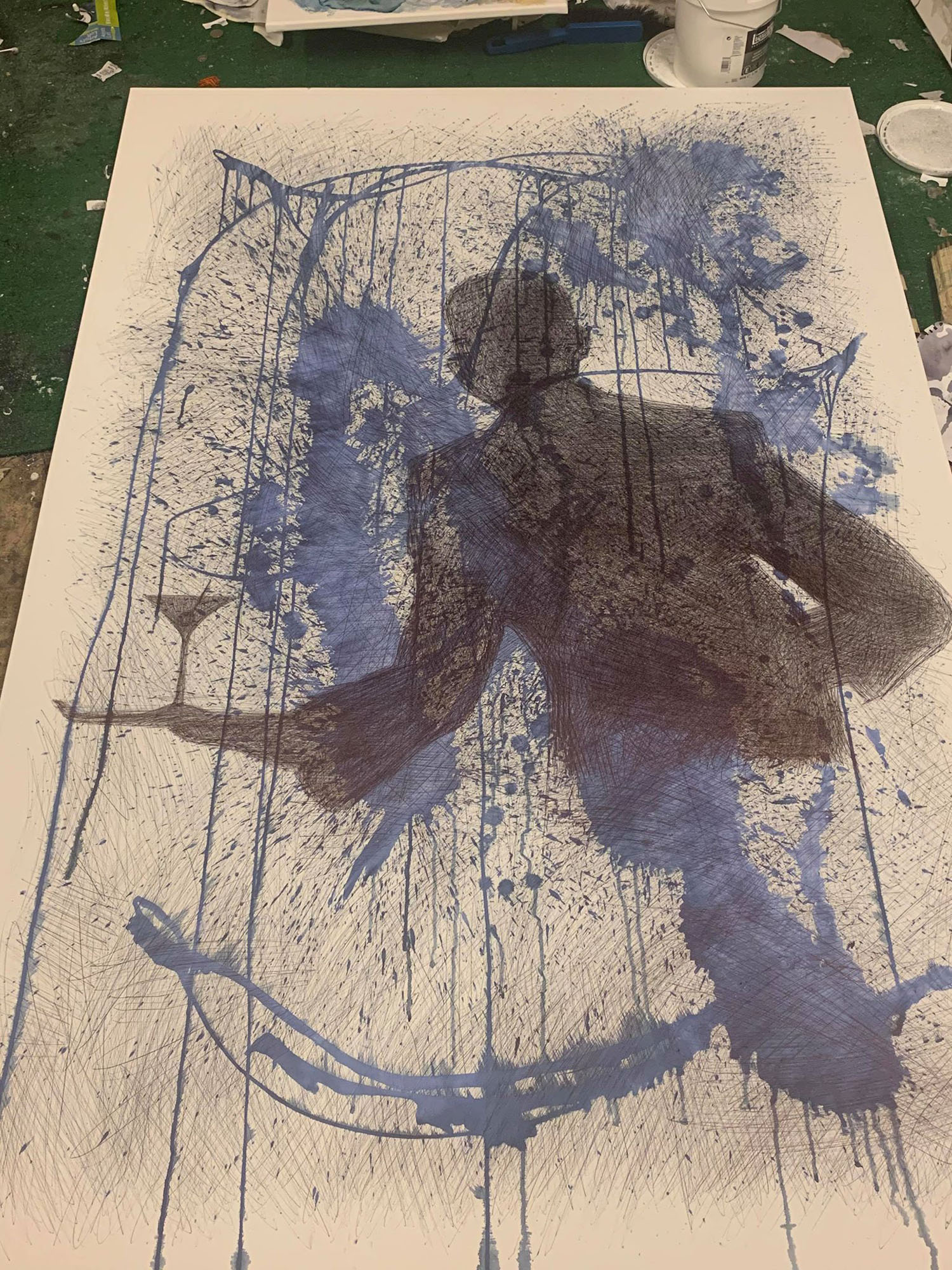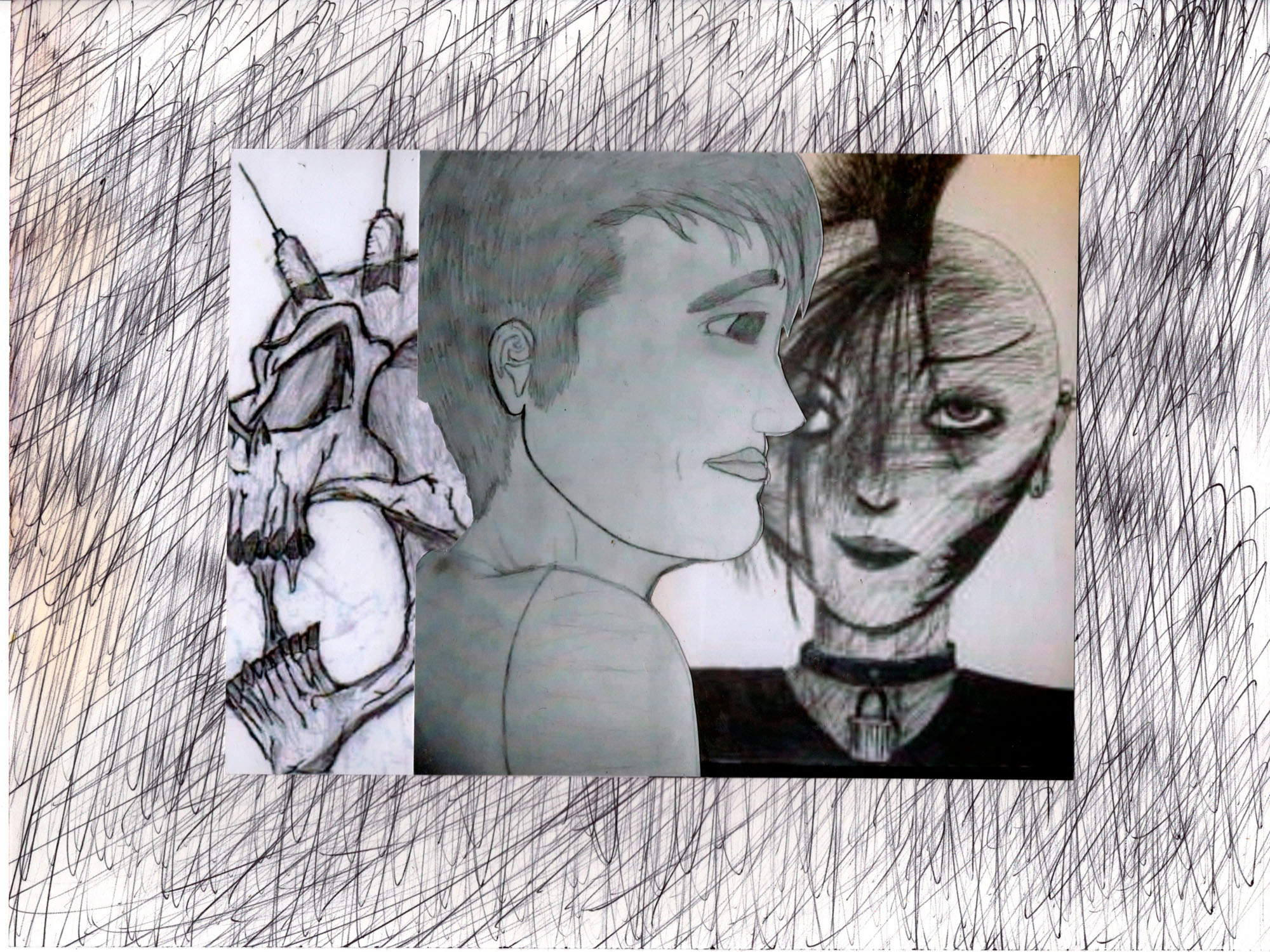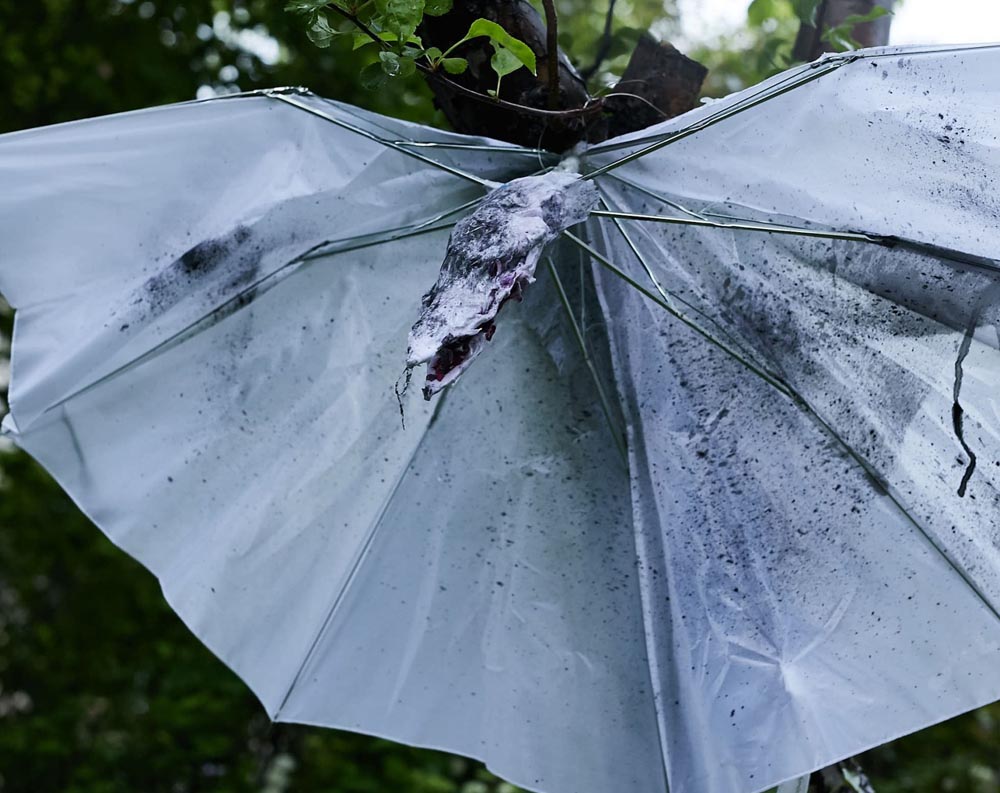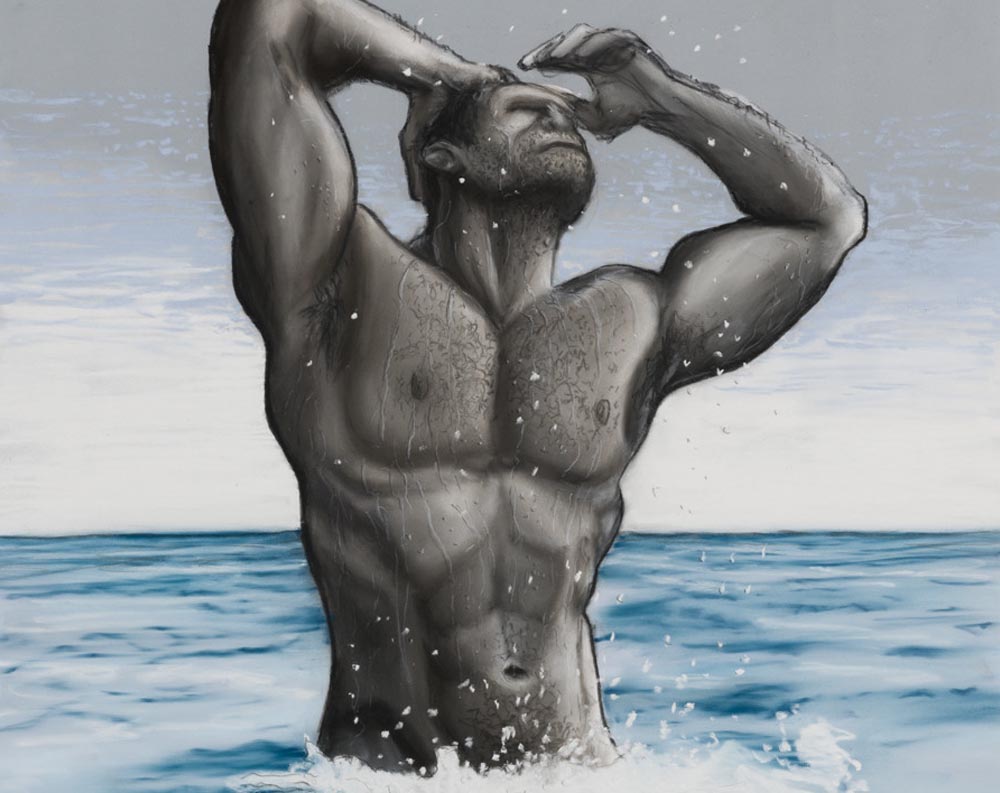Gabrielle Jensen Interviews
Joe Speier
June/ July, 2020
Joe Speier is a Baltimore-based artist who also runs the roving fence-based curatorial platform Sinkhole Project. His sculptural paintings employ a variety of materials that could be found in the average household (BIC pens, nail polish remover, mirrors, magic erasers), and considers both the drudgery and humor contained within a contemporary, working-class Americana. Youtube communities of suburban mothers crafting, teens doodling in their Chemistry notebook dissociating through the doldrums of outdated public school curricula, and the art therapeutic image worlds of American group therapeutic and rehabilitative settings serve as the central imaginaries of Speier’s work. In the midst of both having been laid off from our restaurant jobs at the beginning of the COVID-19 crisis, Joe and I spoke on the phone about his practice’s relationship to art therapy, power dynamics within the service industry, the futurelessness of the art world, and the ways concepts of value— both fiscal and personal— are being reoriented in current upside-down economy.
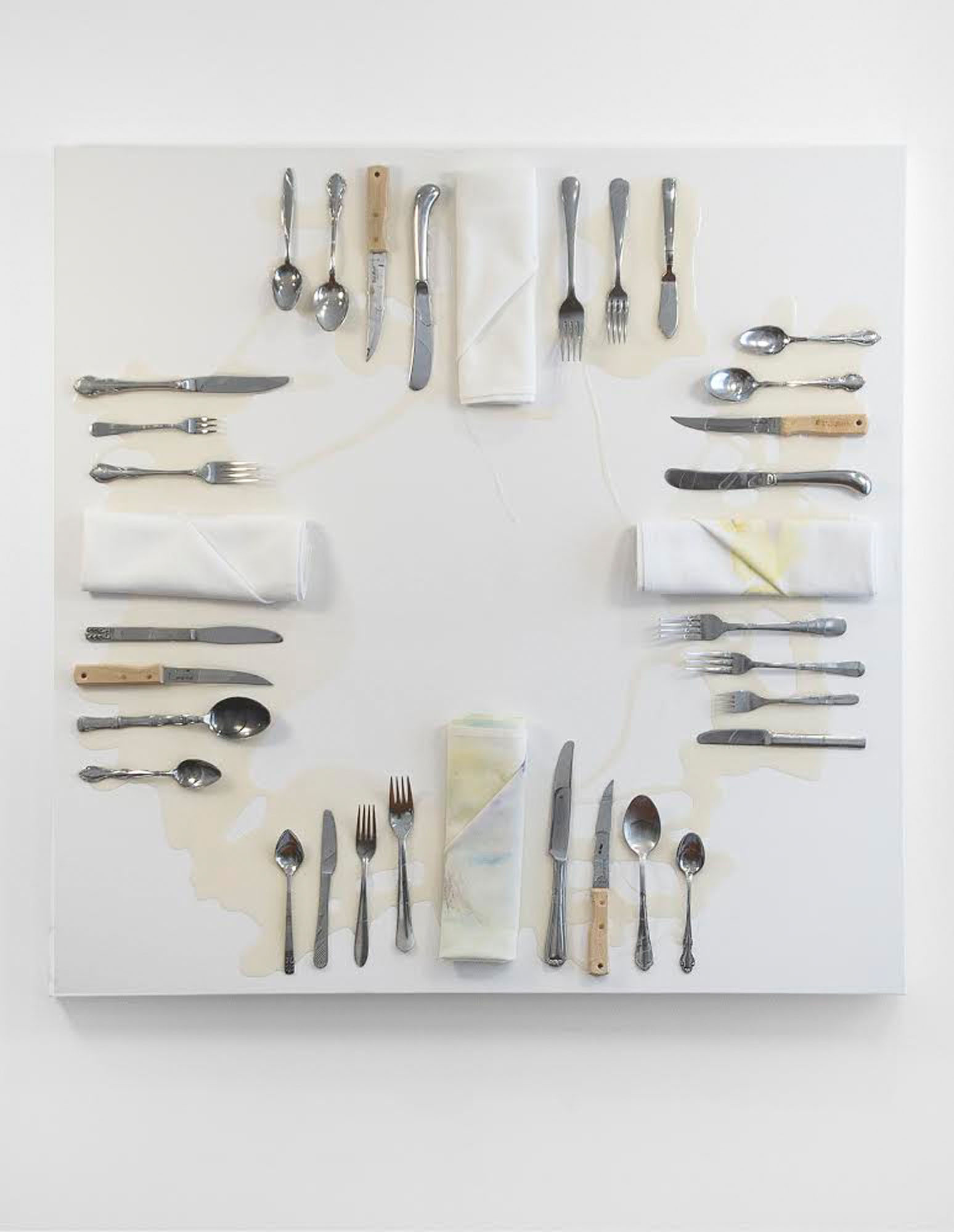
GJ: So what’s happening in the studio in your time of quar?
JS: Really not much. I’ve been sitting in here a lot, but haven’t really been making too much since the quarantine started. I’ve been using flatware and doing these table setting paintings.
GJ: With the full-blown etiquette exercise style.
JS: Yeah! The restaurant where I work is on the Johns Hopkins campus, so these etiquette instructors come to our restaurant to teach Hopkins business students how to behave in the executive world, and I wait tables during these events. We have diagrams for the proper table settings, and I have a few of these relics on hand. I find it really funny. This kind of table setting is representative of a very exclusive thing— to eat a meal with that much silverware is so extravagant.
GJ: As a part of this lesson, do they discuss how to interact with the service at all? If so, what do they say?
JS: Yeah, they do. The students are instructed to not interact with the service much at all— not to wave them down, or make eye contact (unless they need something). They talk about being discrete. As a server, I do wish more people knew not to wave me down. It’s somewhat demeaning. The stuff that they teach is less about how they treat the server, but about not wanting to seem uncouth to the people you’re dining with.
GJ: So the restaurant you work at is in a museum as well?
JS: Yes, it’s inside of the Baltimore Museum of Art. Though, it is not affiliated- we just rent the space from the museum.
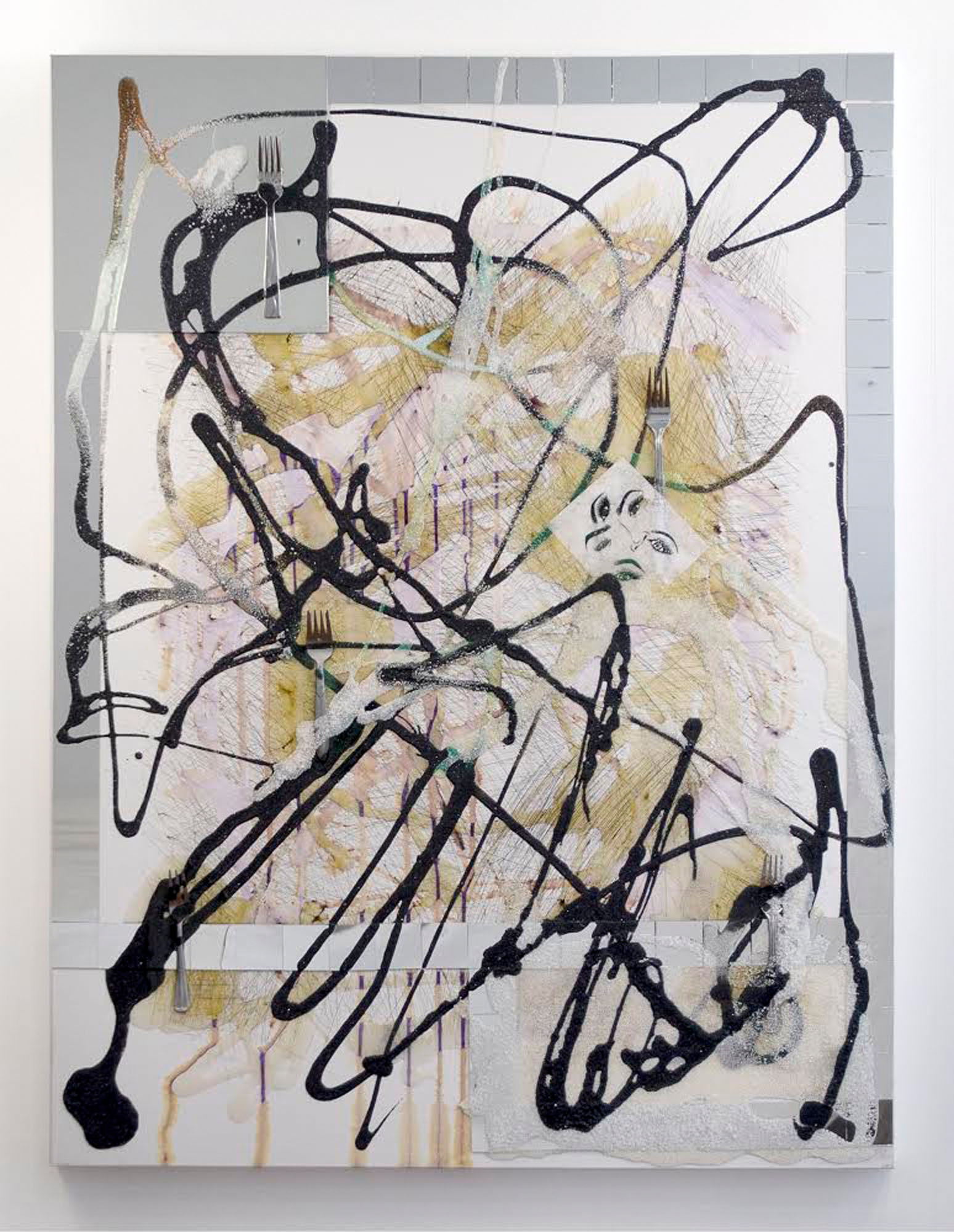
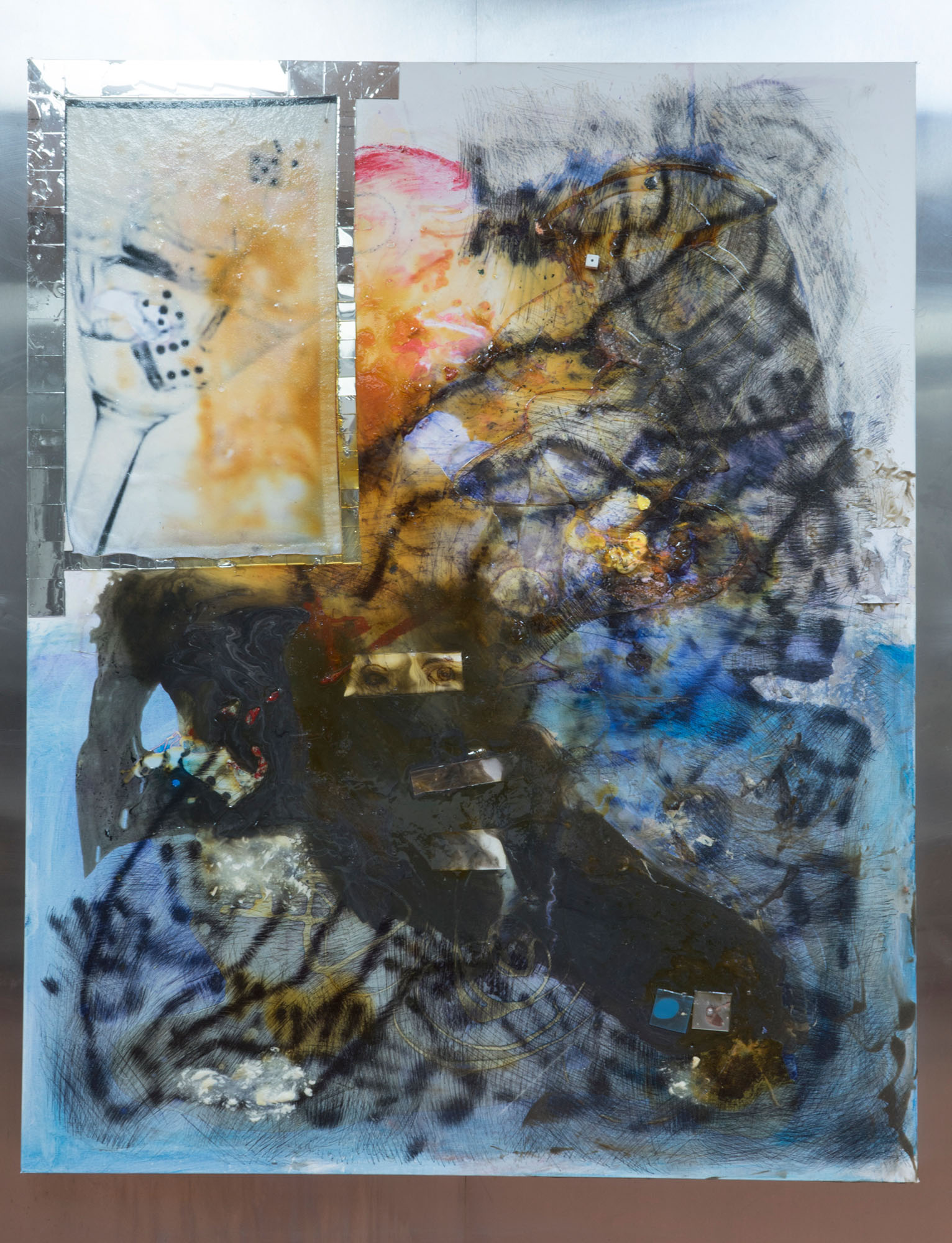
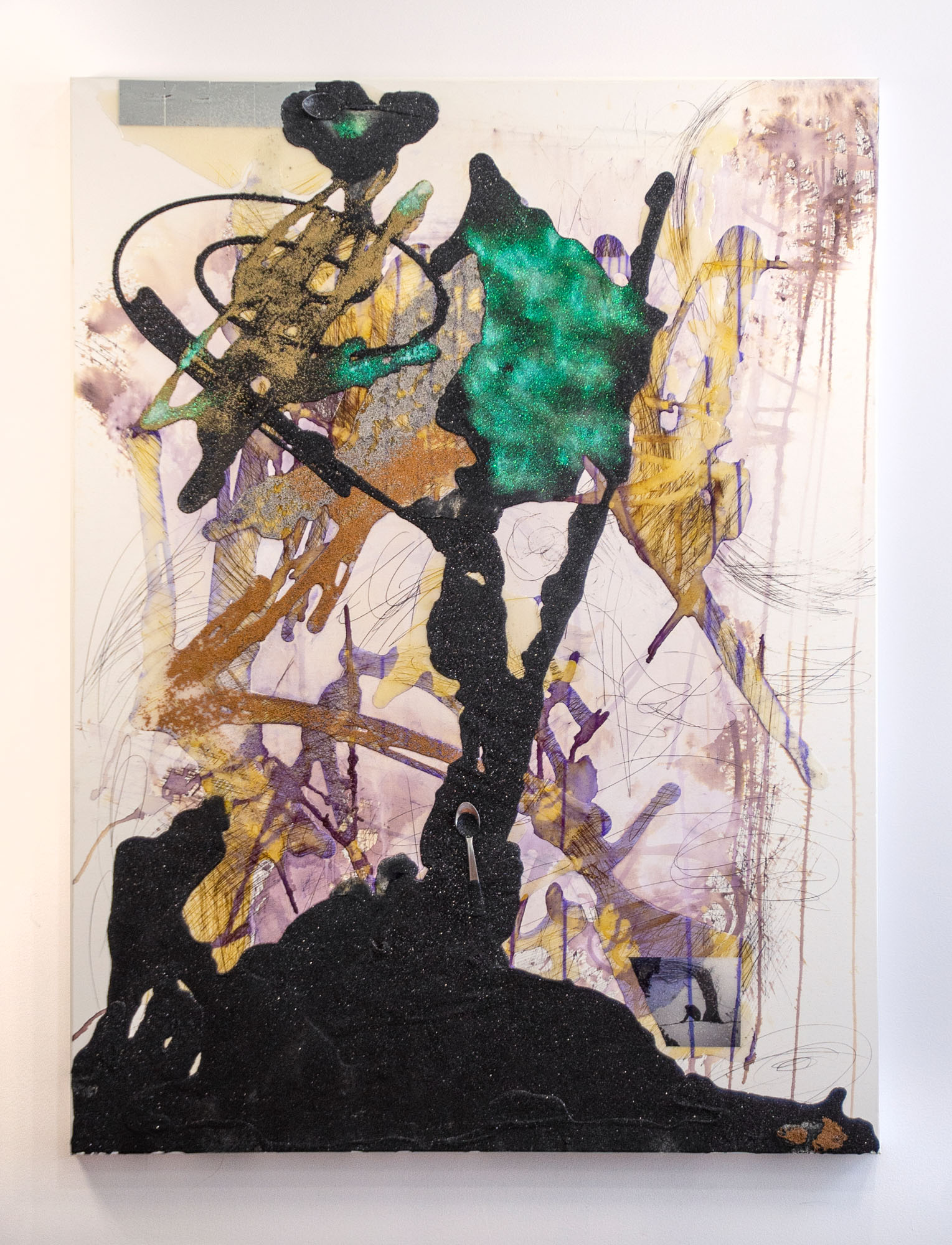
GJ: And what do you experience from the clientele in this restaurant that exists at the intersection of multiple institutions— the art museum and the private university? How does coming up against those specific institutions as an artist and service industry worker play into what you’re making in the studio right now, or in past shows, such as your solo at Gern, We’re Only In It For the Money? It’s all there.
JS: I’m thinking often about what it means to be an artist at this current moment where there are little to no jobs in the field, so all the indebted BFA recipients just work in restaurants. The roles of server and artist are closely related in the way that they cater to a specific class of people. I feel these roles lend themselves to a feeling of being an outsider— always being surrounded by levels of wealth that are so beyond anything I can attain. Though, it is certainly funny to wait tables in the museum while not actually employed by the museum. Especially coupled with the fact that I participate in the arts and therefore have some knowledge of the characters that pass through. I feel like a bit of a mole. One time I waited on Hans Ulrich Obrist when he was meeting with the director of the BMA. He asked to borrow my pen, presumably to do one of his post-it sketch things, and he did not return it to me.
GJ: Mama mia… do they provide you with pens at the restaurant??
JS: No! I have to buy all of my pens; I have so many. It’s convenient though, as the ballpoint pen has become a central material in my practice. I often start many works with a large field of marks made with pen ink.
GJ: Well yeah, I was wondering— how labor-intensive these works were.
JS: They are labor intensive, despite the advances I’ve made in my process. It can take a long time to build up the marks. It’s a very noisy, arduous process that hurts my wrist and arm. But, yeah, they do not provide pens. So, I have to get as much use out of my investment as possible…
GJ: Going back to the Gern show, Marc Matchak’s exhibition text considers your work in discussing these empty characters and stock images in Marie Redonnet’s writing that survive in narrative through a lack of ambition, which presents a challenging notion of value. The show’s premise, in turn, seems very pessimistic in its attitude about making art. In other material of yours I came across in my research for this interview, the word “value” appeared in scare quotes. I was curious about how you contextualize value in an artistic context.
JS: I’m interested in images that are born from a need to self-soothe. I seek “low value” imagery from DeviantArt, thrift stores, and memes. A lot of the images I’m most attracted to seem to come from places of boredom or trauma. I love the idea of someone feeling a very complex, negative emotion and having the need to express it through art, but totally lacking the skills or tools to do so in a “valuable” way. I find that failure often results in humor.
GJ: It feels like the “low value” iconography and its resulting humor or tragedy in your work has a very contemporary American suburban sensibility— the cycle of boredom, rebellion against it, and the isolating punitive consequences that follow, and how that cycle often has a racialized or classed dynamic at play. Can you speak more to that?
JS: I grew up in different neighborhoods surrounding Cincinnati in a pretty wide variety of socioeconomic zones. I always felt that the “middle class” suburban areas were especially tragic. Folks cling to the notion that better things are coming and that class mobility is even a thing. There’s a lot of repression and violence that happens under the surface. I recall in 2008 a man in my town drowned his family in the bathtub, set the house on fire, and killed himself. The burnt skeleton of the house stood there for a long time afterwards and we would drive by it as we smoked weed. It’s a typical American story, almost overplayed and boring.
“The roles of server and artist are closely related in the way that they cater to a specific class of people. I feel these roles lend themselves to a feeling of being an outsider— always being surrounded by levels of wealth that are so beyond anything I can attain.”
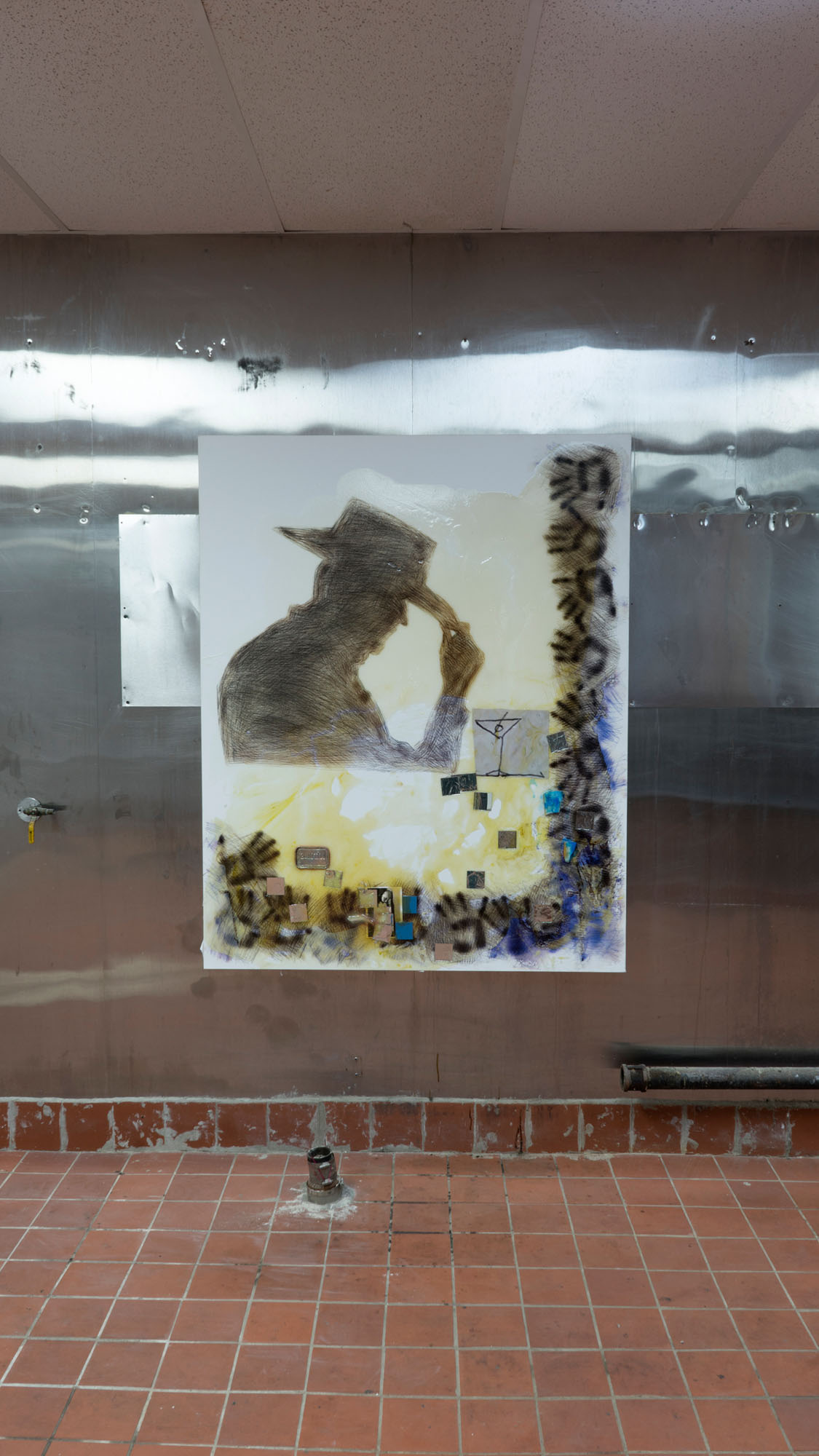
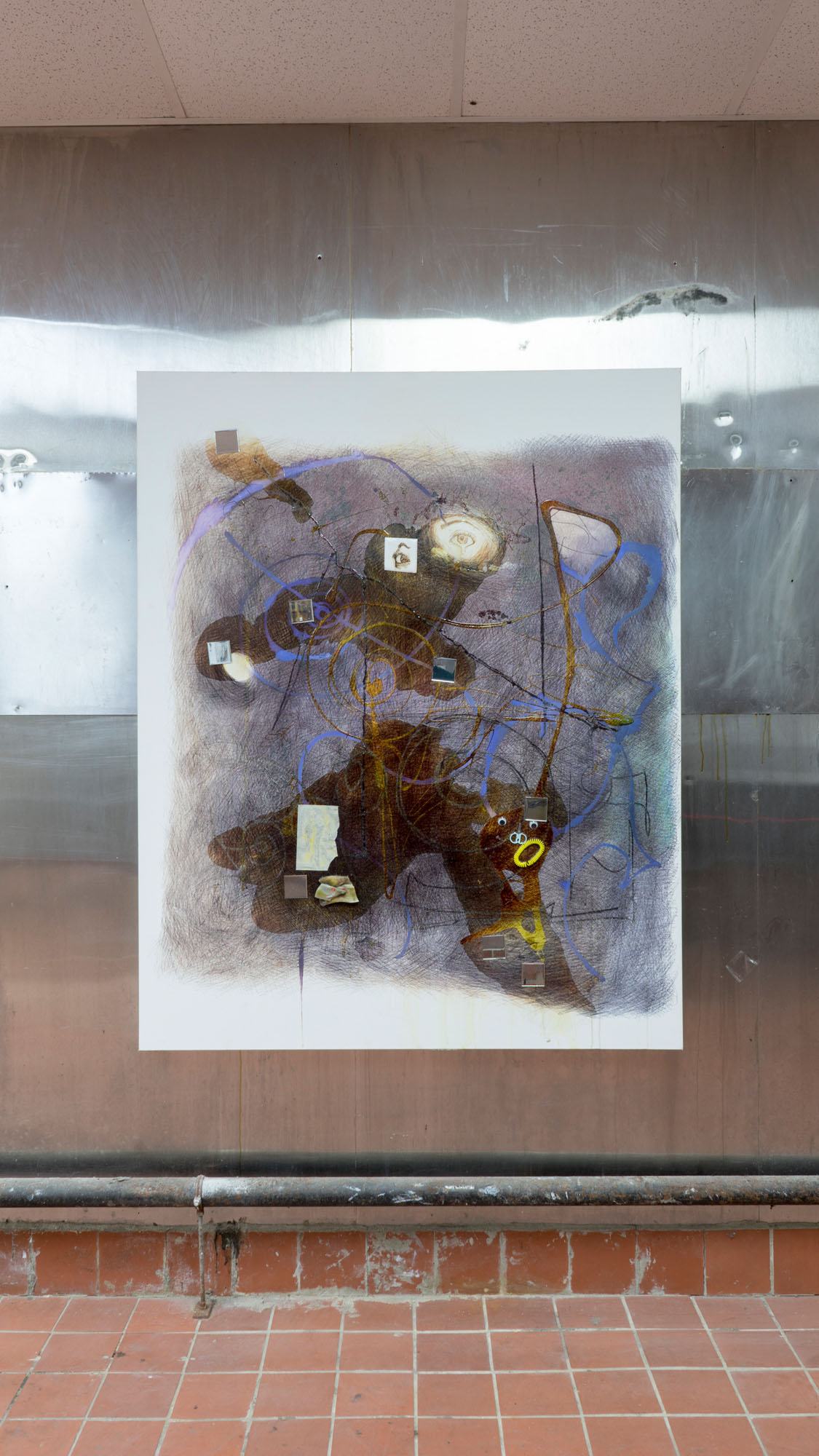
GJ: In the work of yours I’ve seen, the idea of being deliberate as an artist seems to be considered a lie, to the world or artists themselves. It felt like you were saying that as well in the text from a book you made, Radical Self Care. It seems like you have very pessimistic ideas about art’s “function” outside of this personal, rehabilitative mode you’re speaking to.
JS: I do.
GJ: In the text you say, “Drawing feels best when done fast and perfectly every time. When making art selfishly, the artist strives to only please themselves. They create their own specific systems, by which they deem the works ‘valuable.’ This can create an endlessly satisfying feedback loop for the artist, in which they cannot make mistakes, because there are none to be made. Every move feels deliberate when the artist has lied so deeply to themselves.”
JS: I think that’s a “healthy” relationship to image making— where you create your own system and work through problems. It seems pure to me. I do have a pessimistic view of artmaking in general. Art’s function, especially in America, is to make money. So, artists are very strategic in the way they chart the course of their practice. They know exactly what they’re trying to butt up against or reference, and it’s a very deliberate thing. They’re like I want my work to land right here in art history, this is the sweet spot, this will yield the most profits etc. I know it’s not always the case, but this kind of planning feels disingenuous to me. I think it’s counterproductive to constantly tether one’s work to hyper-specific historical references in an attempt to add value.
GJ: I think this also happens when a practice also articulates a personal history of the artist themselves, or when artists render themselves in social spheres into a persona through their work. It often feels like a calculated, entrepreneurial gesture. In your work, it seems that the use of stock images, or another person’s drawings, depersonalizes or divorces you from the work. Is that a fair assessment?
JS: Yeah, totally. That’s part of the reason why I’m attracted to those kinds of drawings— they could be made by anybody. There is no defining visual language to them. Everybody has drawn an eye poorly. Nobody owns that. They’re everywhere. In the restaurant I work there is paper covering the tables, and people draw shitty eyes all over them. It’s great.
GJ That pair of eyes that recur in your work look very Jesus-on-the-Cross like.
JS It’s an image of a suffering figure, like a tormented drug addict’s eyes. Sad, tortured soul eyes.
GJ Yeah, it’s very melodramatic I guess.
JS Absolutely! Melodrama, to me, is king for its cringe-factor. There is a lot of overlap in my use of sourced melodramatic imagery between my practice and Sinkhole Project.
GJ: So you’re saying that, with Sinkhole, your work is kind of a background figure in the shows you organize on the fence?
JS: It depends. Like with the show at Interstate, I did a collaboration with a friend of mine who just started drawing after becoming sober. He was depicting these bar scenes and these lonely characters in a very untrained, beautiful way. I really wanted to show them, but needed to protect them from the elements. So, I cast them in resin, a move which functioned as a nod to my own practice. I like that gesture of bonding myself to the project that way.
GJ: Yeah, very literally in this case. And how would you say the resin functions in your work at large? The use of that encrusted materiality?
JS: It’s not all resin— some of it is this stuff called “pouring medium,” which is an acrylic material you get in a big jug at Michael’s or Joanne’s; that’s where I do most of my shopping for art stuff. There’s a big Youtube community of people that make “pour paintings” using this medium. It’s very popular in the crafts community. I’m into the context of this material but also the way it plays on the canvas. It acts as a guard that encases ephemera and imagery, protecting them.
“(…) this kind of planning feels disingenuous to me. I think it’s counterproductive to constantly tether one’s work to hyper-specific historical references in an attempt to add value.”
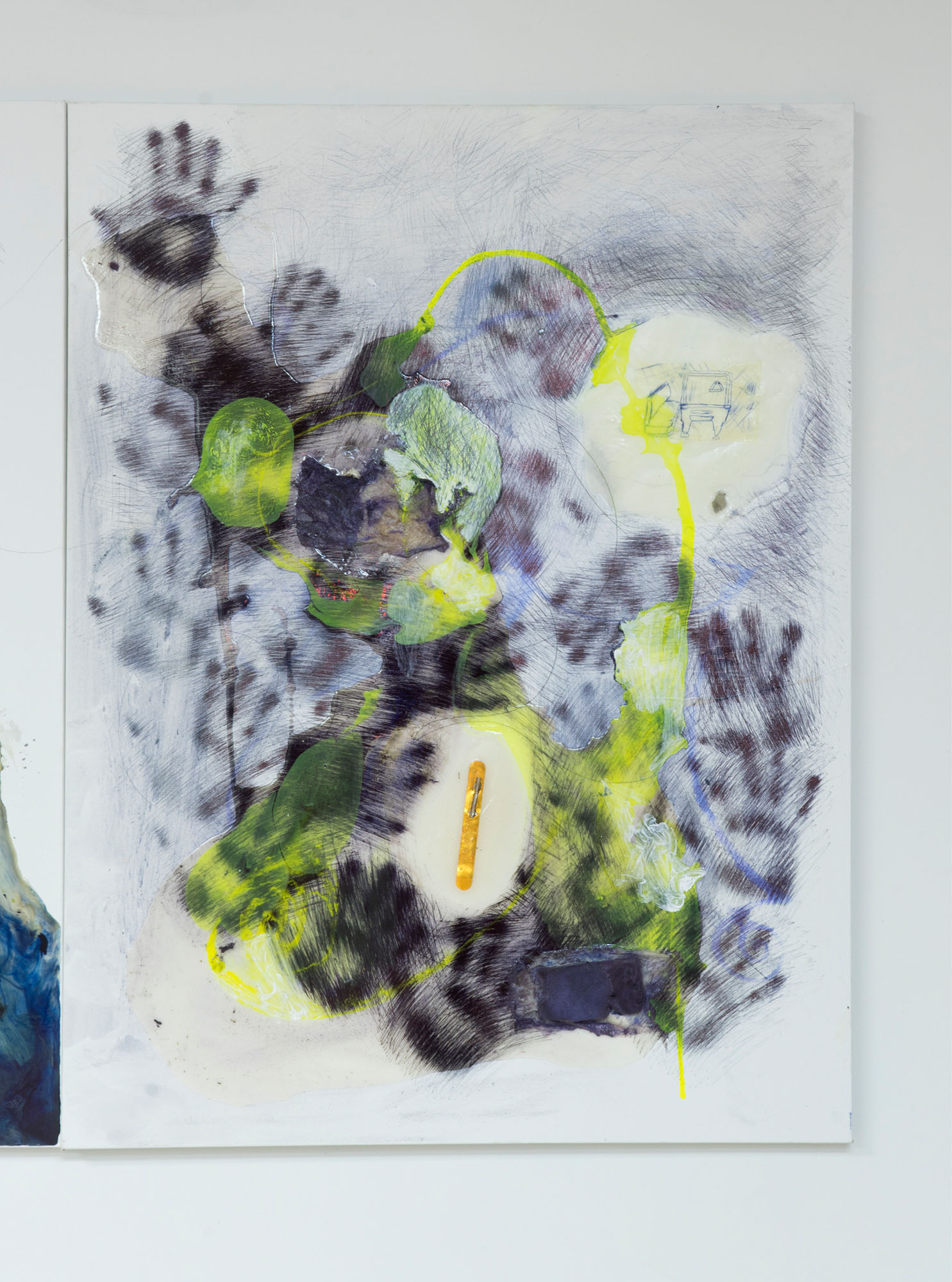
GJ: Going back to Sinkhole, how did it come to be, and can you elaborate further on how it fits into your artistic practice? Like, I organize shows, and there’s this idea that the curator is self-serving and uses art as a crutch for their own research or business enterprises, but when an artist operates in a curatorial capacity, the perception or vibe is very different. Amongst curators, the belief is that they’re facilitating artists’ work. I’m an art world drop-out myself, so I’ve kind of reneged my role if you will, but how did it feel to start curating?
JS: It’s funny, because I feel I have a parasitic relationship to Sinkhole. When an artist becomes a curator or starts a curatorial practice, it can be very self-serving, because I often contextualize my work within my own curatorial practice. I feel like it’s a somewhat taboo play, but i do it constantly.
GJ: When did you start Sinkhole?
JS: In 2017? I had been in Baltimore for about six months. All the spaces had just shut down. There was a thriving scene for a while, but it seemed to all fall apart right when I arrived. I was mostly bored and felt the need to do a lil somethin.
GJ: What was it like to be furloughed recently, in light of COVID-19 and explicitly have to ask people to buy your work? To be honest about being an artist who needs money from their practice, now, since that’s usually not something people talk about. It’s an unwritten rule for artists to not sell work that way.
JS: Oh yeah, I’m totally killing my market right now. It’s very naughty of me to do that.
GJ: And of course it shouldn’t be. You shouldn’t need an intermediary to make a living as an artist, and should be able to have a better grasp on the flow of capital.
JS: Totally. I don’t give a shit. I’m not interested in attempting to control some market that will probably never exist for my work anyways. There are so many weird, unattractive rules like that. We’re going to have to adopt a different model. Especially now with the virus, the entire art market may collapse. There might be no art world after this. It might just be over. That’s a thought that I keep having, how nice it would be if it all fell apart.
GJ: What do you think it would look like if that happened?
JS I don’t know. I don’t know if that ever will happen, as there’s so much money tied up in it. But if it did, there’s that patreon model some artists are utilizing. To me it feels clunky, but seems like a viable option for some. A lot of great artists have taken to selling work directly on instagram, though.
GJ: I think that this crisis is revealing, in multiple sectors of the economy, that the “middle man” isn’t completely necessary. That all of the capital that goes into the act and staging of selling things is not always essential. You could potentially do away with the gallery… or, I don’t know, you probably couldn’t because the collectors wouldn’t know how to invest their money in art.
JS: I don’t know, I’m not opposed to the gallery model, per se. As long as I feel like I’m collaborating with a gallery and there isn’t some awkward power dynamic it’s fine.
GJ: They do a lot of work.
JS: Yeah, they put money up and are laboring in their own way. 50% or whatever the split is doesn’t matter to me as much. I mean, I’m talking about smaller galleries anyway.
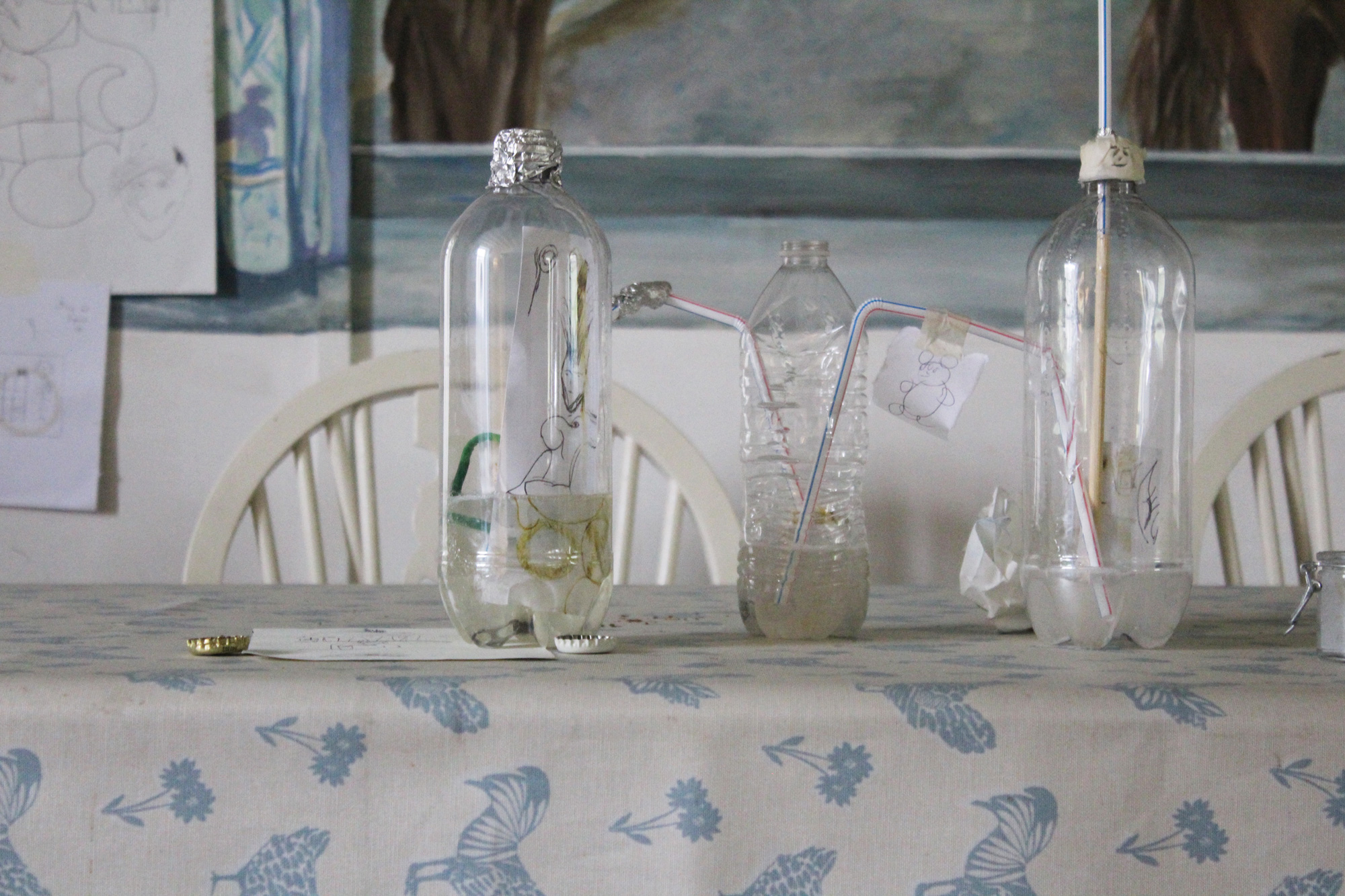
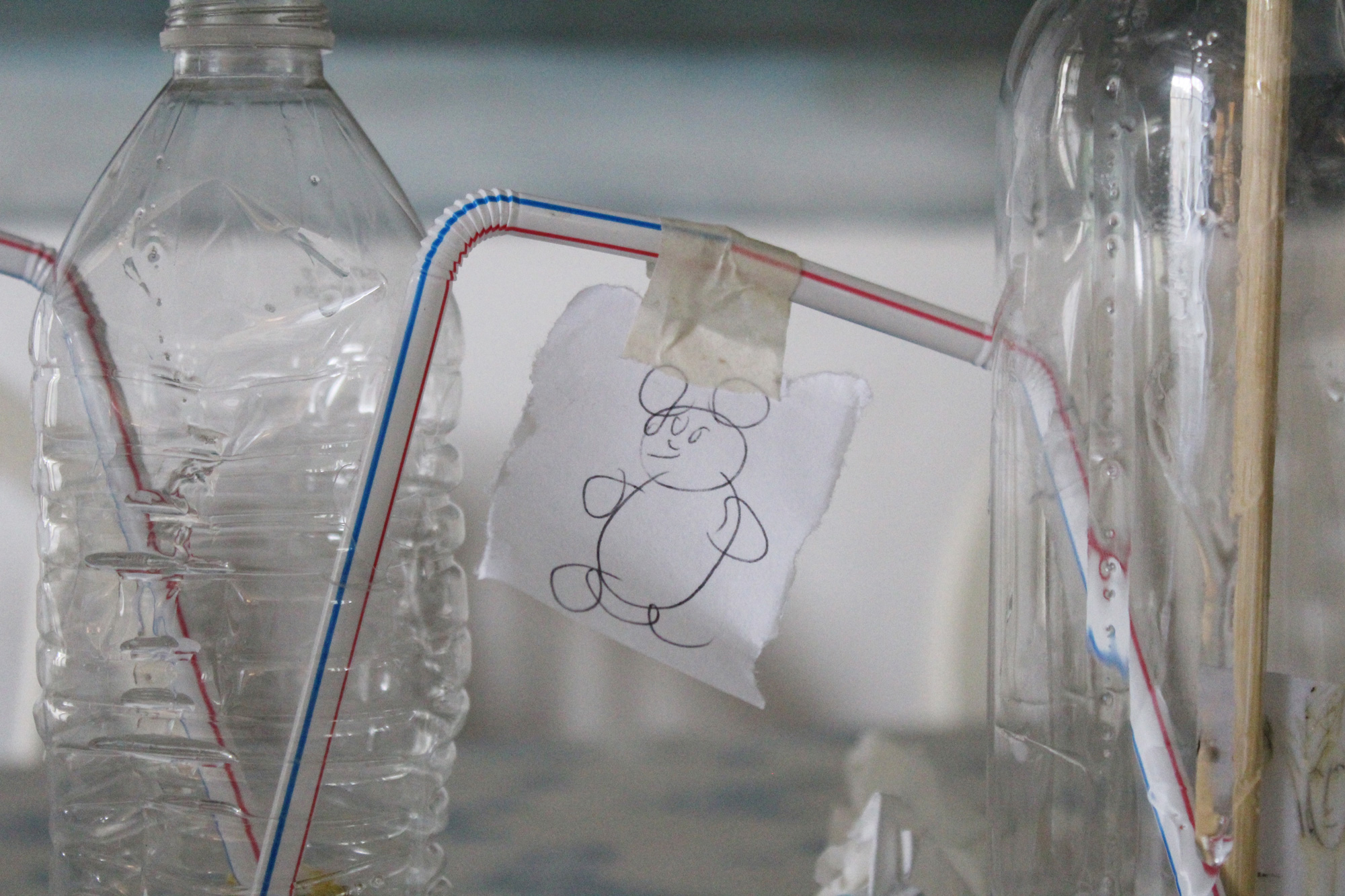
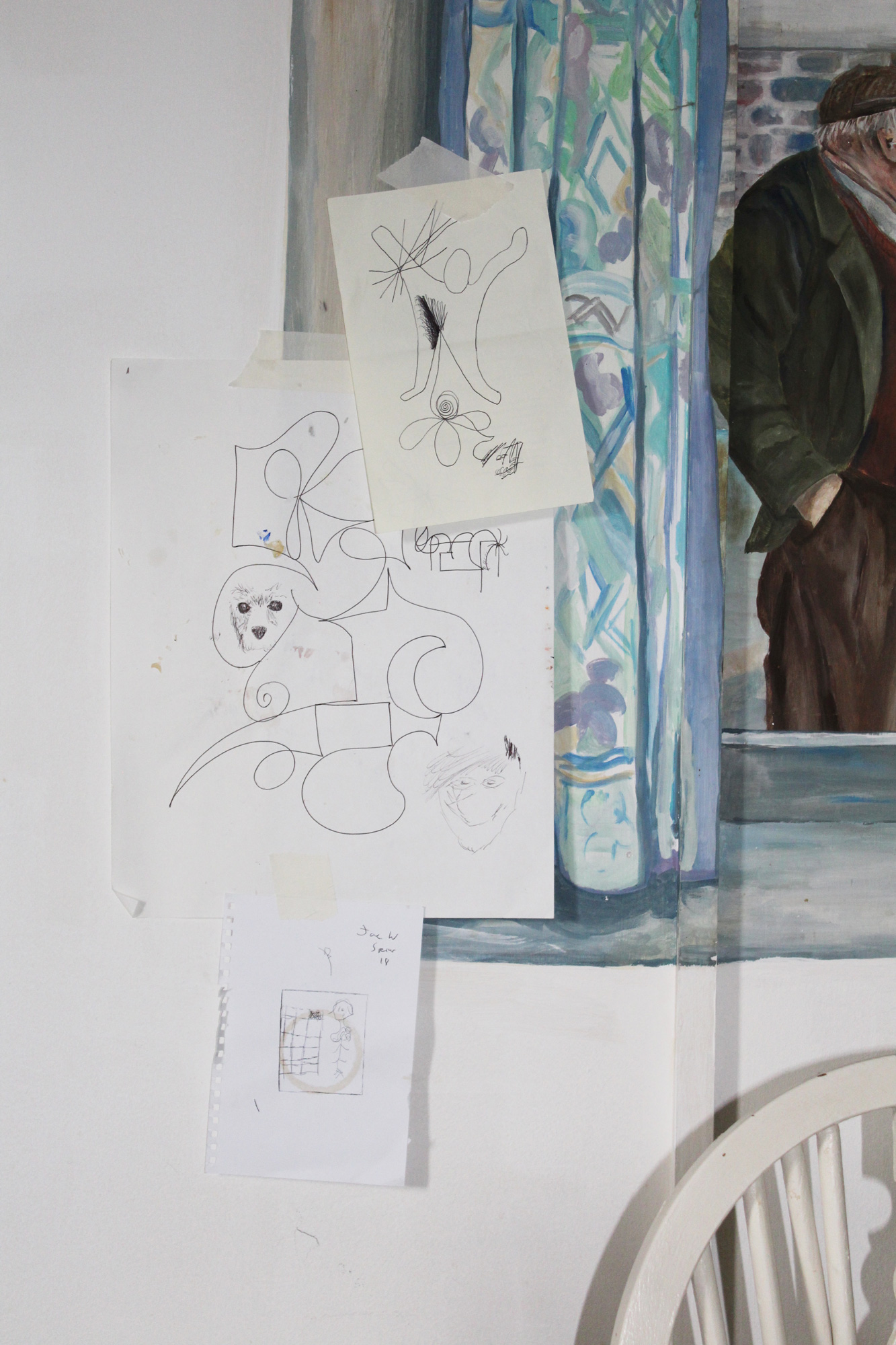
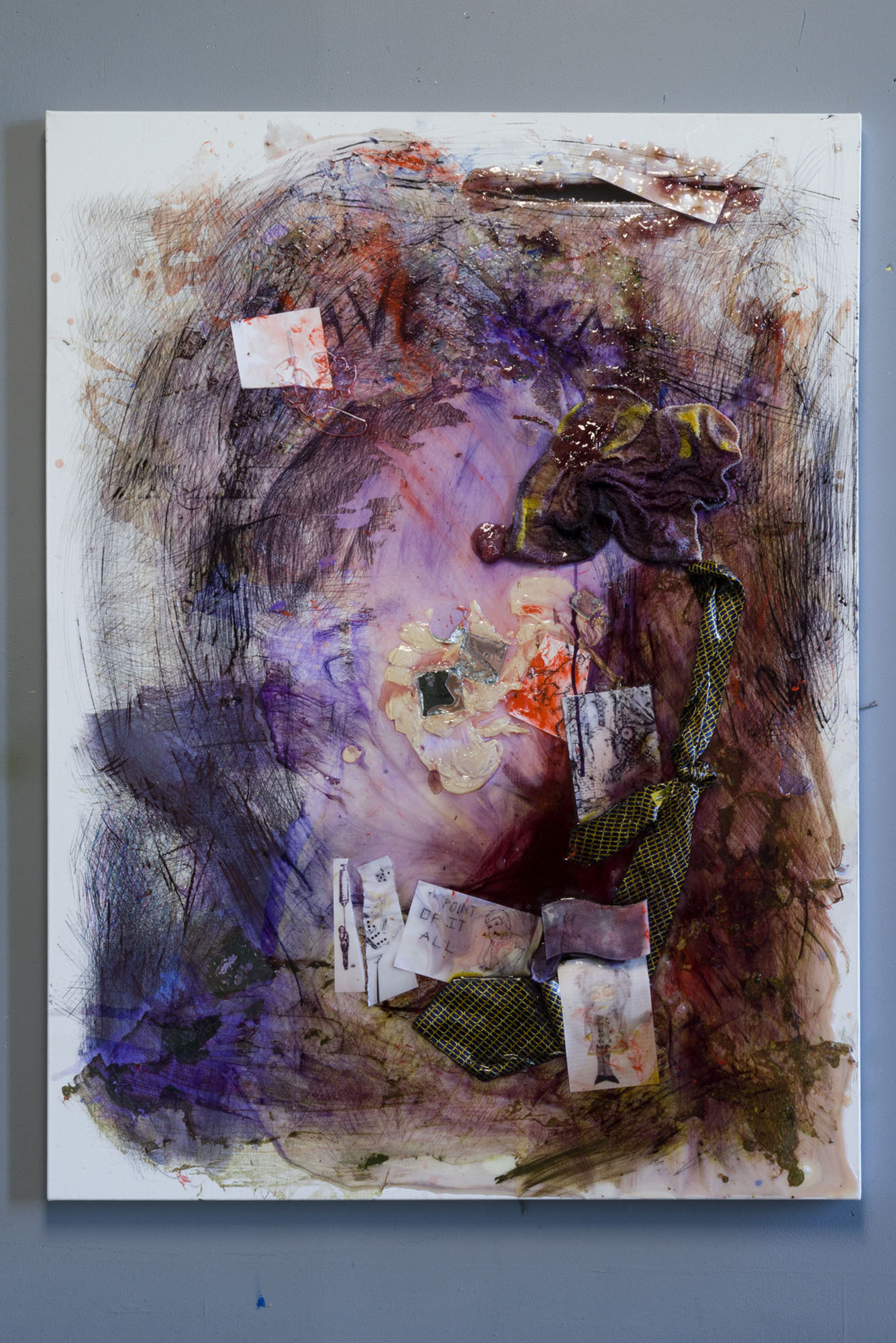

GJ: Getting back to your work, the stock images that, like other aspects of your work, appear to be based in a Wild West imaginary— the dice, the cowboy, the drink in hand— how do you collage those together? Where do they come from?
JS: Those images in particular reference a specific kind of machismo myth relating to drug culture. I have a personal connection to the material I source despite the fact that it is so innocuous. I definitely had my struggles with substances, in and out of rehabs, etc. This imagery is a way to reconnect to that experience while also making fun of/ playing with it.
GJ: How do you think this machismo mythology functions alongside what feels like image worlds that are conflicted at first glance— the sequestered feminine/ Mom craft culture elements in your work, as well as that of the apirational Teen Boy scrolling through DeviantArt? They feel like they’re a part of the same ecosystems of suburban isolation or tragi-comic American story arcs we spoke about earlier.
JS: Yeah, all of these characters operate within the same ruleset or system. They seek to pacify themselves in some way. The mother and the child do it through art, but the machismo character engages in substance use, or long stints at the poker table. It is a melodramatic story arc. They’re all failures, in my opinion, but again I find that failure quite hilarious. I think these characters ultimately just seek a sense of belonging, that they are experiencing life; but that ultimately fails because they’re operating in such an animalistic, “in the moment” way.
GJ: It feels like your work evokes a dispersed collective fantasy for the American dream to still exist, only to demonstrate that that is no longer the reality. The desires bound to the American dream itself have also failed or always were a failed product of capitalist ideology; therein lies the cyclical tragedy we’ve been talking about, which brings me to thinking about the way you use mirrors in your work. The mirror is a classic symbol of the gulf or encounter between an ideal/ fantasy self, and that of reality— does the mirror, in your work, have anything to do with the mythologies and narrative arcs we’ve been discussing?
JS: Yeah, I think so. Firstly, I’m attracted to the mirror because it is a (mostly) failed art material. Some of the most garish and hilarious paintings I’ve ever seen employ shattered mirror pieces in the composition. It’s often used to invoke “the self” or as a metaphor for the ego. I love that. It’s so on the nose and stupid. Secondly, I’ve come to think of a mirror as a self care machine. I had a drug counselor once who told me to look in the mirror every day and say “I love you” in the most genuine way possible. It’s a really difficult thing to do. It can feel very melodramatic and corny, and even if you’re being sarcastic I feel it still works a bit. Mirrors for me have come to embody the notion that I can approach things from both a cynical and sincere point of view.
GJ: The “I love you” mirror work is a Louise Hay thing— she was this self-help guru who had some pretty chopped ideas about healing during the HIV/AIDS crisis, that the power to heal was in the individual’s hands. I guess this connects to the pull-yourself-up-by-your-bootstraps mythos we’ve been talking about, and how it feels like it represses or forestalls reckoning with actual structural, socio-economic disease. On a tangent, I’m looking at the use of the aluminum foil in the gravity bongs in your work from Hippies Use the Side Door, which also remind me a lot of teen Americana. Do you make a lot of sculptural work? I’ve only seen these bong studies come up a few times; they’re really funny.
JS: Thank you! I actually think of my works on canvas more as sculpture, because I’m not really depicting an image or anything. It’s just a combination of different materials. That bong in particular was actually made by the curator— Spencer Lai (this great Australian artist). I sent them reference photos, and they made it/ put the aluminum foil on there. I have a folder of DIY bongs and other homemade drug paraphernalia on my computer. It’s funny/cathartic for me to make these drug devices that typically are made by someone who has a very intense need.
GJ: In your show with Abby Lloyd, altoids are everywhere. Is that at all a reference to drug culture or the collection and arrangement of paraphernalia as well?
JS: I think on some level it was. But I was thinking more about bedazzled frames and craft culture, and I was just eating a lot of altoids, and still do. That particular altoid— the blue one— does have a somewhat pharmaceutical vibe, similar to some prescription opiates.
GJ: I guess these cultures all collapse in your work. When you were talking about the art therapeutic elements of your practice, it feels like a very physical reinvestment of the energy of assembling drug paraphernalia, consuming drugs and alcohol etc— that physical, tactile nature of your work seems to be fulfilling some of those drives, which is cool.
JS: Totally. It’s a cathartic exercise. Especially my use of the ballpoint pen, which I think of as a widely-used tool for repurposing trauma. Doodling, art therapy in rehab, etc these activities are, in my view, very tethered to the pen.
GJ: Yeah, completely. It’s also the pinnacle of administrative aesthetics— the clinician at rehab, a teacher, a nurse or people in roles like that always have the BIC pens.
JS: Totally. It’s a very utilitarian, accessible, and cheap medium. That’s what I doodled with in high school and used as my primary tool at work. Inexpensive and accessible materials like the nail polish remover, crumbers, magic erasers, and mirrors have become pretty central to my practice. Especially the nail polish remover which I often use to eat away some of the pen marks.
“I’ve come to think of a mirror as a self care machine. I had a drug counselor once who told me to look in the mirror every day and say “I love you” in the most genuine way possible. It’s a really difficult thing to do. It can feel very melodramatic and corny, and even if you’re being sarcastic I feel it still works a bit.”


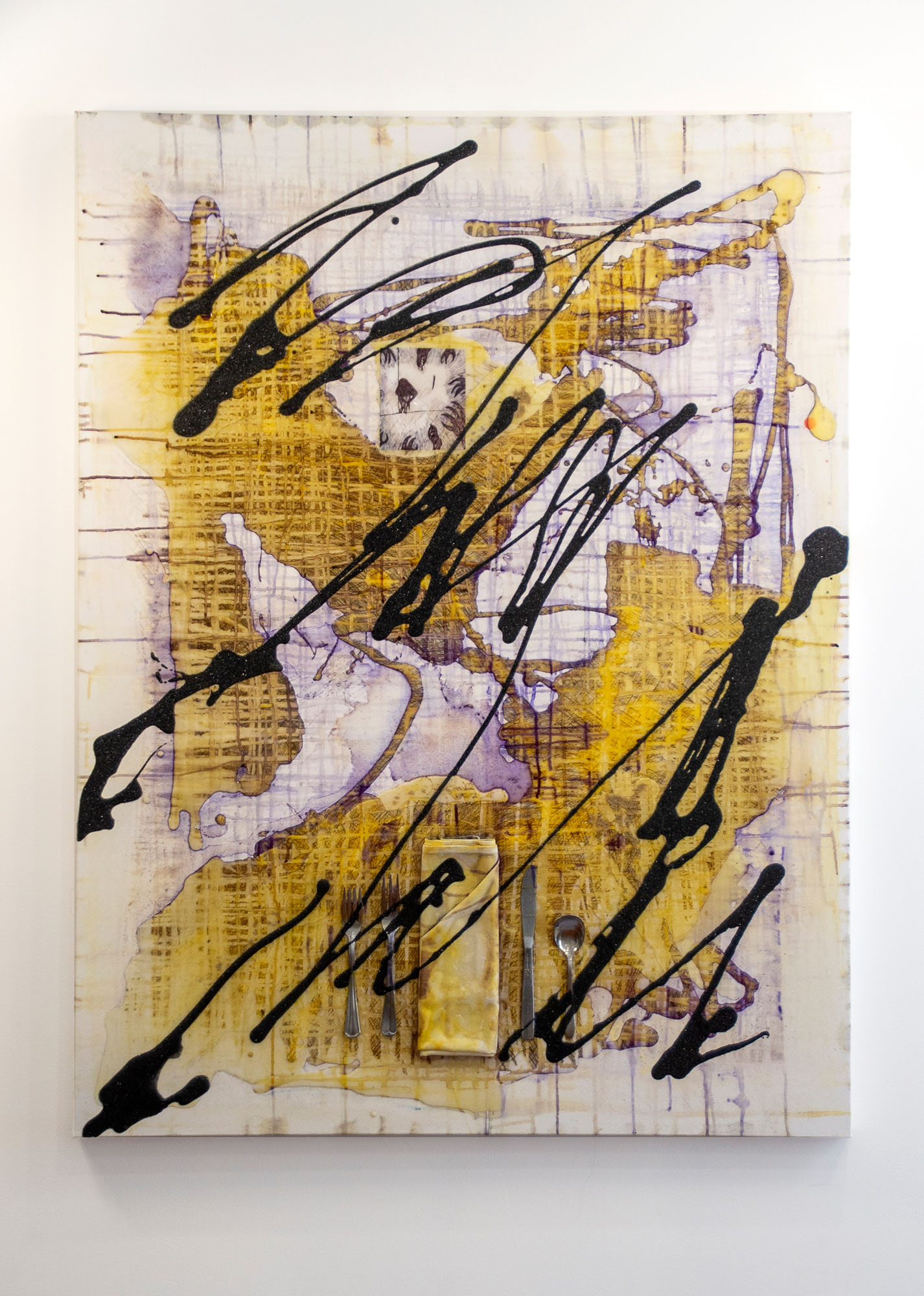
GJ: I was looking at some of your stuff and didn’t know how that removal was working; very satisfying to find out the truth haha.
JS: Yea its just nail polish remover. It results in a beautiful blue after it touches the ballpoint pen’s pigment. I’ve been experimenting more with exposing the surfaces too. Some of the materials aren’t archival; if they’re exposed to direct UV light they will begin to fade a little bit. So I’ve been taking the work outside and trying to harness its vulnerability to the elements. It’s still a work-in-progress though.
GJ: It definitely renders the work for you, or for viewers concurrently alive with the work. Well, I think that we covered a lot. Thank you so much for talking with me, Joe. Be well.
JS: Thank you! Enjoy whatever the fuck we’re doing right now.

Interview conducted by Gabrielle Jensen with Joe Speier for O Fluxo, July, 2020.
O FLUXO is an online platform for contemporary art.
EST. Lisbon 2010
Follow us:
@instagram
@facebook
O FLUXO
© 2023
